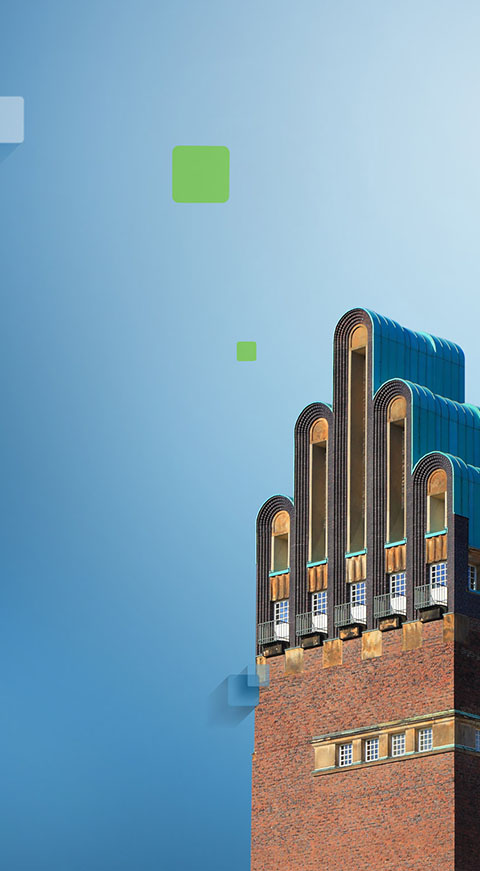
It was four years ago that Science City Darmstadt set out to turn into a digital city. This goal was supported by the state of Hesse, both as an idea and financially. As 2021 draws to a close, the state’s financial support is coming to an end, and so Smart City Darmstadt took stock of the situation at a virtual press conference today together with Hessian Minister for Digital Strategy and Development Prof. Kristina Sinemus, Darmstadt’s Lord Mayor Jochen Partsch and Darmstadt’s Chief Digital Officer Prof. Michael Waidner.
‘Since winning the title “Digital City” in 2017, Darmstadt has made the best possible investments in the future. And that’s not all. With a broad strategic approach, the state funding of five million euros was used wisely, enabling almost all areas of municipal activity to achieve a measurable boost in development. It is particularly noteworthy that the city’s inhabitants were not presented with a finished outcome, but were involved in a comprehensive and transparent process. This approach is entirely in line with the digital strategy of the state of Hesse, according to which digitalisation must not be an end in itself and whose focus is on people. Congratulations on a job well done to all those involved! It wasn’t an easy project, but it was worth it,’ explained Hesse’s Digital Minister Prof. Kristina Sinemus.
The minister also stressed that Darmstadt had developed into a model municipality for Hesse and the federal government. Transferring the findings and solutions from Darmstadt to other Hessian municipalities had been considered right from the start of the funding period, with the aim of developing the whole of Hesse into a smart region.
Darmstadt’s Lord Mayor Jochen Partsch added: : ‘We set out in 2017 to become Smart City Darmstadt, for which there were no urban planning blueprints from other cities or communities at the time. Back then, as pioneers, we set ourselves the goal of digitalising the provision of our public services in the interests of the city’s residents and creating a European counter-model to the Asian smart city. As a result, we have succeeded in establishing digital sovereignty, and we have also been able to achieve tangible added value for our ecological, economic and social goals with digitalisation. Things like intelligent waste disposal and traffic management using AI, as well as digital media education, have appeared on the agenda of other municipalities. Looking back, what really pleases me is the fact that our idea of using digitalisation as an urban planning tool has become very successful. We are using digital applications to make Darmstadt even more liveable – and have thus become the first blueprint for other municipalities. An important element in achieving this was the financial and personal support of the state of Hesse, for which I would again like to express my thanks.’
One of the secrets of the successful strategy, Partsch continued, is Darmstadt’s rigorous approach, whereby digitalisation projects are not implemented in a city’s historically established structures, but instead have to operate in a networked way between the administration and city management. This happened in 14 urban action areas and the state funding supported 20 projects. ‘As a result, we achieved a great deal – for example, being the first city ever to be able to work with a fully productive data platform. It links city data from the various offices, partly in real time, and enables faster and, above all, more targeted action to address challenges in mobility chains or environmental issues, for example.’
In addition to all of the project work, an important step in Darmstadt’s development into a beacon of digital urban development was the establishment of the Ethics and Technology Advisory Board, as CDO Prof. Michael Waidner further explained: ‘The ethical guidelines are another recipe for success in our history of digitalisation. They enable a high level of acceptance of technology in society and the economy, thus paving the way for a future in which Darmstadt can react quickly to change and accommodate and deploy new technologies and applications. The projects and laboratories also complement Darmstadt’s profile as a city of science with its strong research institutions, such as the Technical University of Darmstadt and other universities, the Fraunhofer-Gesellschaft, GSI, ESA/ESOC institutes and, of course, the National Research Center for Applied Cybersecurity ATHENE, the largest research centre of its kind in Europe. The aim of Smart City activities is always to focus on the benefits for the city’s inhabitants. This approach has become widely established, and we now know that other cities and communities are embracing our principles when they start their own digitalisation work.’
Smart City Darmstadt’s success story is not coming to an end. The established structures, which now include Smart City Laboratory, are being continued as part of the nationwide ‘Smart Cities made in Germany’ funding scheme of the Federal Ministry of the Interior (BMI). Focal points of future Smart City development include climate resilience and water management in Science City Darmstadt. The strategy phase for the new funding has already begun in 2021 and will continue to work out what will be undertaken in the new funding period of seven years with a financial volume of €13.3 million.

